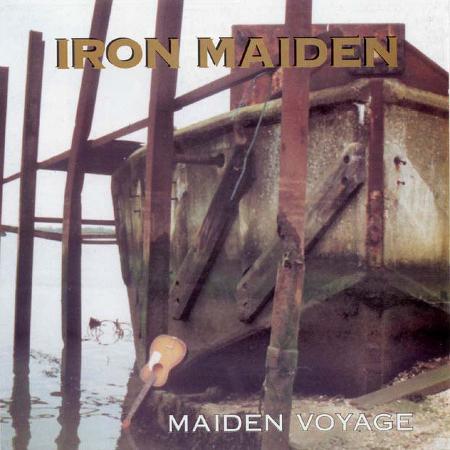In 1964, Barry Skeels, Steve Drewett, Chris Rose and Alan Hooker formed an acoustic band in Basildon, Essex that eventually evolved into a band called Iron Maiden (unrelated to the currently famous Iron Maiden). By 1966, the lineup was Skeels (bass), Drewett (vocals/harmonies), Rose (lead guitar), Tom Loates (rhythm guitar) and Stan Gillem (drums); they played Rolling Stones and blues numbers under the name "Growth". Reduced to a two-piece, Drewett and Skeels played blues under the name of "Stevenson's Blues Department" in pubs and clubs in Essex and London. They supported a number of up and coming bands including Jethro Tull, Fleetwood Mac, The Groundhogs and King Crimson.
In 1968, Drewett and Skeels were joined by Paul Reynolds (drums) and Trevor Thoms (guitar). They released an acetate (God of Darkness/Ballad of Martha Kent) under the then risqué name of Bum. When they signed to the Gemini label in 1970, the name was changed to the less risqué Iron Maiden. They recorded their debut album Maiden Voyage. Reynolds was replaced by Steve Chapman on drums and Iron Maiden released the single Ned Kelly/Falling. This coincided with Mick Jagger's film "Ned Kelly". A planned Australian tour fell through. The Gemini record label also folded (with the loss of the debut album master tapes) and Skeels left Iron Maiden. The band carried on without him for a while, but the debut album was not released until 1998 using duplicate tapes owned by Skeels.
The sound of this band is very different to the current Iron Maiden; the first "Iron Maidens" were able to produce a sound innovative and completely addictive with major highlight for the galloping bass of Barry Skeels and dynamic riffs of Trev Thoms. The group played a mix of styles ranging from blues rock to progressive rock to psychedelic rock, that was considered at the time as pioneering and innovative for the formation of the style that later would be known as doom metal. For that to happen, Maiden Voyage was released in 1969 in a series of singles and compilations; the album was recorded in its entirety between 1968 and 1970, but not released until 1998. It was an album with excellent technical diversity and was almost one hour long. The British group had a very strong and straightforward sound, and composed tracks with considerable duration in time length; "Falling", "Liar", "Ritual" and "Plague" are great examples of this.
Unfortunately Maiden Voyage was poorly produced, like many bands at the time. Nonetheless, the incredible bass of Skeels and the strong and heavy guitar riffs of Thom are still audible. Tracks to pay attention to would be "Falling", "Liar", "Ritual", "Plague" and "God Of Darkness". In the bands contract with Gemini it was stipulated that if the album was successful, the band would have a professional relationship with Gemini Records for three years. The band had a short tour and opened a few concerts for bands such as The Who and Amen Corner.
There's no formal relationship between the first Iron Maiden and the current one. The only thing that is known is that in 1976 Steve Harris received a phone call from another English person with different accent, threatening to sue them for using the same band name. The threat was never substantiated and became forgotten in the treasures of memory. In fact, Iron Maiden led by Steve Harris are in fact the third band to use the name "Iron Maiden", between 1970 and 1976 existed a second Iron Maiden.
The sound created by this original Iron Maiden was very innovative for the time, and was pioneering for darker styles such as doom metal. The complicated riffs and galloping bass behind the band's lead vocals made this group worthy of attention and appreciation. It's a mandatory band for anyone who likes blues rock, progressive rock, or psychedelic rock and proto-doom/prog/folk.
Maiden Voyage recorded 1969/70 for Gemini Records, released 1998 on Audio Archives.
- Steve Drewett - Vocals
- Barry Skeels - Bass
- Trevor Thoms - Guitar
- Paul Reynolds - Drums
 Before Steve Harris formed arguably the biggest heavy metal band on the planet, Iron Maiden existed as a completely different band. Formed in Basildon,Essex, these chaps were inspired by the likes of Cream, until Led Zeppelin caught their eye that is. Immediately embarking on a heavier direction that resulted in the release of their one and only single (which included the tracks Falling and Ned Kelly – released in 1970)
Before Steve Harris formed arguably the biggest heavy metal band on the planet, Iron Maiden existed as a completely different band. Formed in Basildon,Essex, these chaps were inspired by the likes of Cream, until Led Zeppelin caught their eye that is. Immediately embarking on a heavier direction that resulted in the release of their one and only single (which included the tracks Falling and Ned Kelly – released in 1970)








 1
1 0
0
што за странные стили ...

Thank ya \m/
thanks
TACK!
thanks!!!
Thanks